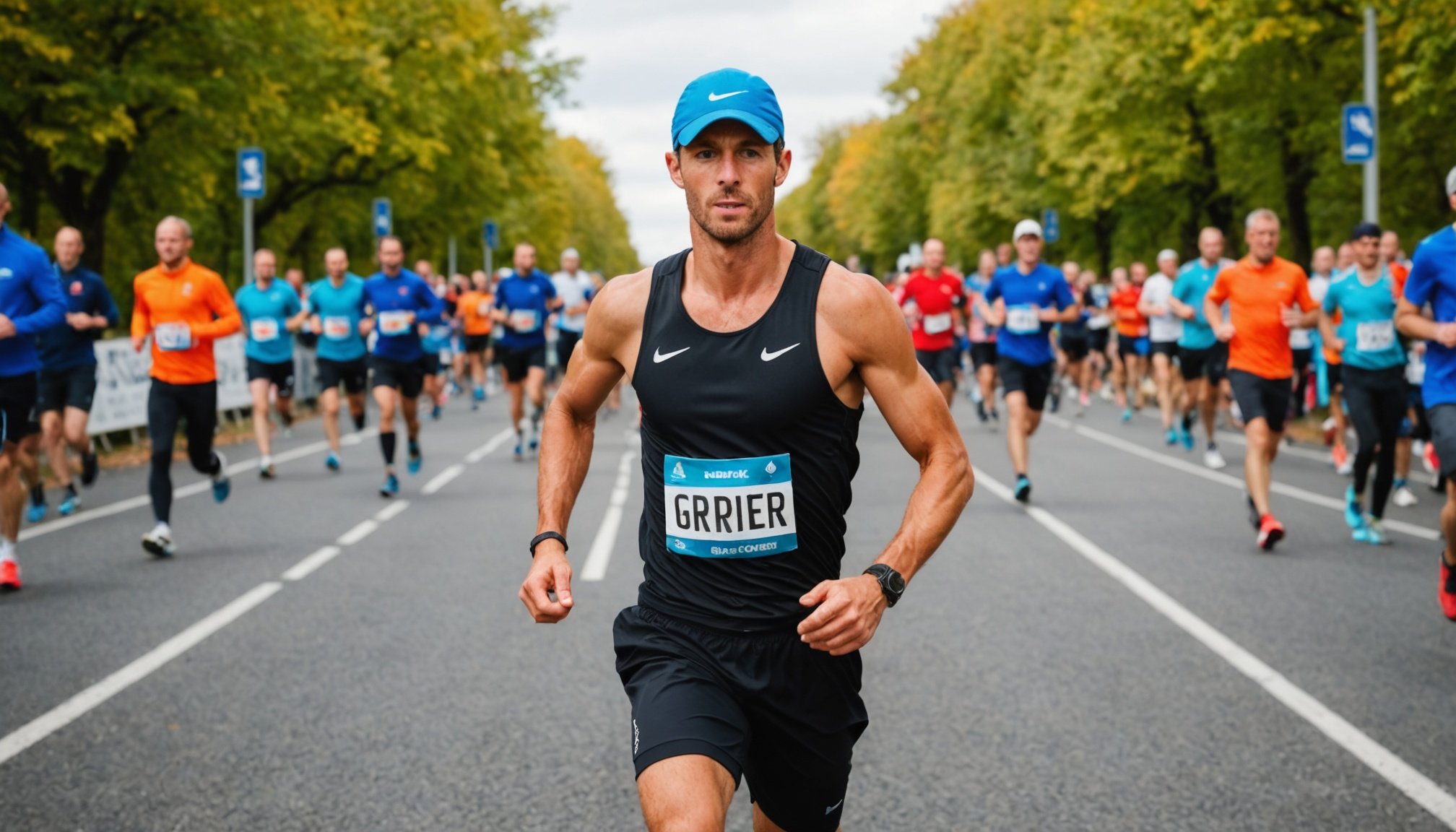Ultimate Recovery Techniques for UK Marathon Runners: Proven Cool-Down Methods to Enhance Post-Race Recovery
Understanding the Importance of Recovery in Marathon Running
When you’re training for a marathon, the focus often lies on the intense training sessions, the long runs, and the meticulous planning of your race day strategy. However, one of the most critical yet often overlooked aspects of marathon training is recovery. Recovery is not just about resting; it’s a structured process that helps your body repair and adapt to the demands you’ve placed on it.
“Recovery is a crucial part of the training process. It’s where your body adapts to the stress you’ve put on it, and it’s where you get stronger and faster,” says Tristan Pawlak, a running expert from “Dans la Tête d’un Coureur”[1].
In the same genre : Transforming indoor air quality: effective solutions for sports facilities in the uk
Post-Race Cool-Down: Why It Matters
The cool-down phase immediately after a marathon is vital for several reasons. Here are a few key points to consider:
Reduces Muscle Soreness
A proper cool-down can significantly reduce muscle soreness, also known as Delayed Onset Muscle Soreness (DOMS). This is especially important after a marathon, where your muscles have been subjected to extreme stress.
Additional reading : Unlocking performance: the benefits of integrating sports psychology in training for uk snooker players
Promotes Blood Flow
Cool-down exercises help in promoting blood flow, which aids in the removal of waste products such as lactic acid that accumulate in your muscles during intense exercise.
Prevents Injuries
A cool-down routine can help prevent injuries by gradually bringing your heart rate and breathing back to normal, reducing the risk of muscle strains and other injuries.
Effective Cool-Down Techniques for Marathon Runners
Here are some proven cool-down methods that can help enhance your post-race recovery:
Walking or Light Jogging
After crossing the finish line, take a few minutes to walk or do some light jogging. This helps your body transition from an intense state to a more relaxed one.
- Start with a 5-10 minute walk or light jog
- Gradually reduce your pace over the next 10-15 minutes
- Focus on deep, rhythmic breathing
Static Stretching
Static stretching is essential for improving flexibility and reducing muscle tension. Here are some key stretches to include in your cool-down routine:
- Hamstring Stretch: Stand with your feet shoulder-width apart, then bend forward at the hips to stretch the back of your legs.
- Quad Stretch: Stand with one hand against a wall for balance, lift one leg behind you, and grab your ankle with your hand.
- Calf Stretch: Stand facing a wall with one hand on the wall for balance, step one foot back about a foot and a half, keeping your heel on the ground.
- Hip Flexor Stretch: Kneel on all fours, bring one knee forward, and place your foot flat on the ground in front of the other knee.
- Chest Stretch: Stand in a doorway with your hands on the doorframe at shoulder height, lean forward until you feel a stretch in your chest.
Foam Rolling and Self-Myofascial Release
Foam rolling and self-myofascial release are excellent ways to reduce muscle tension and improve blood flow.
- Focus on your IT band, quadriceps, hamstrings, and calves
- Use a foam roller to roll out each area for 30-60 seconds
- Apply moderate pressure, increasing as needed
Massage Therapy
Massage therapy can be incredibly beneficial for post-marathon recovery. It helps in reducing muscle soreness, improving circulation, and promoting relaxation.
- Opt for a professional massage within 24-48 hours after the race
- Alternatively, use a self-massage tool or ask a partner to help
- Focus on key areas such as your legs, glutes, and lower back
Nutrition Guide for Post-Marathon Recovery
Nutrition plays a critical role in the recovery process. Here are some key nutritional tips to help you recover effectively:
Immediate Post-Race Nutrition
Within the first 30-60 minutes after the race, it’s crucial to consume a mix of carbohydrates and proteins to help replenish energy stores and repair muscles.
| Nutrient | Recommended Intake | Examples |
|---|---|---|
| Carbohydrates | 15-30 grams | Sports drinks, energy bars, bananas |
| Proteins | 10-20 grams | Protein shakes, nuts, dried fruits |
| Hydration | Aim to drink 16-20 ounces | Water, sports drinks, coconut water |
Post-Race Meal
Your first meal after the race should be balanced and include a mix of complex carbohydrates, lean proteins, and healthy fats.
- Grilled chicken with quinoa and vegetables
- Salmon with sweet potatoes and green beans
- Lentil soup with whole grain bread
Hydration
Staying hydrated is essential for recovery. Aim to drink at least 8-10 glasses of water per day, and consider adding electrolyte-rich drinks to help replenish lost salts.
Mental Recovery: The Often Overlooked Aspect
Mental recovery is just as important as physical recovery. Here are some tips to help you recover mentally:
Rest and Relaxation
Ensure you get plenty of rest and avoid strenuous activities for at least a week after the marathon.
- Aim for 7-9 hours of sleep per night
- Take naps if needed
- Engage in relaxing activities like reading, meditation, or yoga
Social Support
Surround yourself with supportive people who understand the challenges you’ve faced.
- Share your experience with friends and family
- Join a running community or support group
- Celebrate your achievement with loved ones
Sample Recovery Plan
Here’s a sample recovery plan for the first week after a marathon:
| Day | Physical Activity | Nutrition Tips | Mental Recovery Tips |
|---|---|---|---|
| Day 1 | Light walking or gentle stretching | Focus on carbohydrates and proteins; stay hydrated | Rest, avoid strenuous activities; celebrate your achievement |
| Day 2 | Foam rolling and self-myofascial release | Balanced meals with complex carbs, lean proteins, and healthy fats | Engage in relaxing activities; connect with supportive people |
| Day 3 | Gentle cycling or swimming | Include anti-inflammatory foods like berries and omega-3 rich foods | Take naps if needed; avoid screens before bedtime |
| Day 4 | Light jogging or walking | Ensure adequate hydration; consider electrolyte-rich drinks | Practice mindfulness or meditation; read or listen to calming content |
| Day 5 | Rest day | Focus on nutrient-dense foods; avoid heavy meals | Plan a relaxing outing; avoid overexertion |
| Day 6 | Gentle strength training | Include protein-rich foods to aid muscle repair | Engage in hobbies or activities you enjoy; limit screen time |
| Day 7 | Gradual return to normal training | Balanced diet with a mix of carbs, proteins, and fats | Reflect on your experience; set new goals and plan your next training phase |
Featured News and Expert Insights
“Nutrition is key in recovery. Ensuring you have the right balance of carbohydrates, proteins, and fats can make a significant difference in how quickly you recover,” says Gilles Dorval, an expert in running from Boutique Marathon[4].
Cycling Guide and Cross-Training for Runners
Incorporating cycling or other cross-training activities into your recovery routine can be highly beneficial. Here’s why:
Reduces Impact
Cycling is a low-impact activity that can help reduce the stress on your joints compared to running.
- Use a stationary bike or go for a gentle outdoor ride
- Aim for 20-30 minutes of moderate-intensity cycling
Improves Cardiovascular Fitness
Cycling can help maintain your cardiovascular fitness without the high impact of running.
- Incorporate interval training to keep your heart rate up
- Focus on proper form and technique to avoid injury
Road Cycling as a Recovery Tool
Road cycling can be an excellent recovery tool for runners, especially during the off-season or when recovering from an injury.
- Start with short rides and gradually increase distance and intensity
- Use cycling as a way to cross-train and avoid burnout
- Incorporate hill sprints or interval training to keep your workouts engaging
New York Marathon Nutrition Guide
For runners preparing for the New York Marathon or any other major marathon, nutrition is a critical component of both training and recovery.
Pre-Race Nutrition
Focus on complex carbohydrates, lean proteins, and healthy fats in the days leading up to the race.
- Pasta with lean meat and vegetables
- Grilled chicken with quinoa and avocado
- Oatmeal with nuts and dried fruits
Race Day Nutrition
Ensure you have a balanced meal the night before and a light, easily digestible breakfast on race day.
- Avoid heavy meals; opt for something light like toast with avocado or energy bars
- Stay hydrated by drinking water and electrolyte-rich drinks
Half Marathon and Marathon Training: The Role of Recovery
Whether you’re training for a half marathon or a full marathon, recovery is a crucial part of your training plan.
Half Marathon Recovery
For a half marathon, the recovery period is generally shorter than for a full marathon. However, it’s still important to follow a structured recovery plan.
- Cool down with walking or light jogging
- Focus on nutrition and hydration immediately after the race
- Take rest days as needed; avoid overexertion
Marathon Training and Recovery
For marathon training, recovery becomes even more critical due to the increased distance and intensity.
- Incorporate rest days and cross-training into your training plan
- Focus on nutrition and hydration throughout your training
- Use tools like foam rolling and massage therapy to aid in recovery
Recovery is not just an afterthought in marathon training; it’s an integral part of the process that helps you perform better and avoid injuries. By incorporating cool-down techniques, focusing on nutrition, and taking care of your mental health, you can ensure a successful and sustainable running career.
“Remember, recovery is where the magic happens. It’s where you get stronger, faster, and more resilient. Don’t neglect it,” advises Blaise Dubois from “Dans la Tête d’un Coureur”[1].
By following these ultimate recovery techniques, you’ll be well on your way to enhancing your post-race recovery and setting yourself up for future running success.











